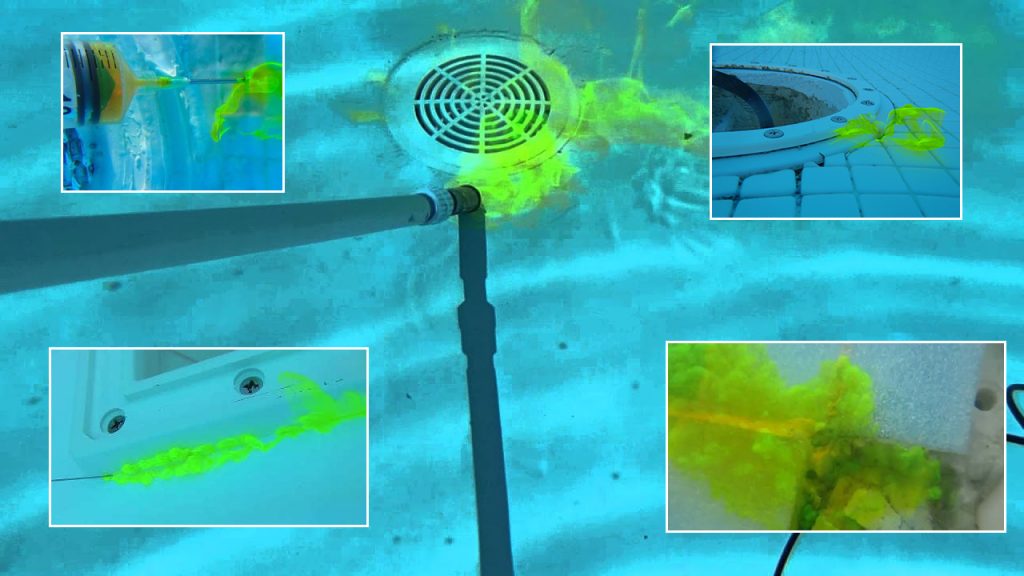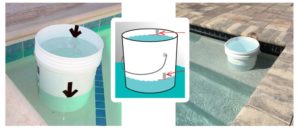
Difference Between Leakage and Evaporation: It is normal for a pool to lose water due to evaporation and normal use. However, there are abnormal causes of water loss, such as leaking pipes, leaks on parts to be sealed such as skimmers or lighting, liner leaks, or structural cracks.
Tip for checking for a leak: You can place a bucket of water on the steps of the pool so that the water level inside the bucket is the same as that of the pool. After 24 hours, if the pool level is lower than the bucket, there may be a leak.
Why not drain the pool: It is not recommended to empty the pool to look for a leak, as the leak may be invisible to the naked eye and require professional equipment to be detected.
Intervention of a professional: In the event of a suspected leak, it is recommended to call a professional who specializes in finding water leaks in swimming pools. These experts use technical equipment to locate the source of the leak without emptying the pool. They perform tests, such as endoscopic camera tracing of buried networks, pressurization of pipes with neutral tracer gas, video inspection of pipes, and ultrasonic and dye leak testing.
Steps of professional intervention:
- Getting in touch
- Scheduling the appointment
- In-home intervention
- Submitting a report

Final Tip: Do not undertake repairs without having precisely identified the origin of the leak thanks to a professional’s diagnosis. An intervention can be carried out without damaging the pool or emptying it.
If you suspect a leak in your pool, it is essential to call in qualified specialists to resolve the problem effectively and prevent further potential damage.

